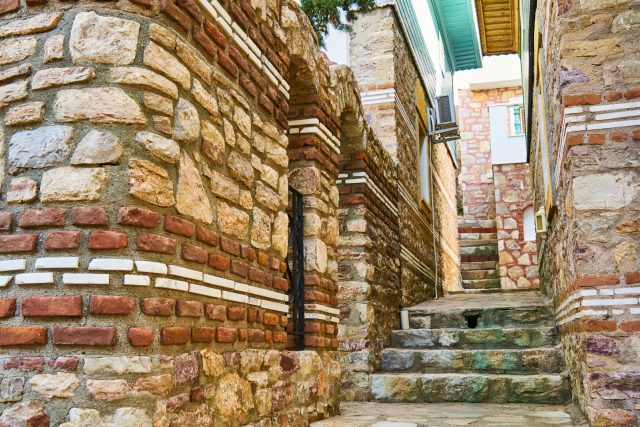
According to the Party Wall etc. Act 1996, you have to serve a Party Wall Notice to your neighbour before starting any construction work on a location where it may affect both properties. This notice has to be served between two months and one year before the anticipated date of starting the work. Types of construction that is covered by the Party Wall Notice are as follows.
- Building a new wall on/at the boundary of two properties
- Any construct ion work on an existing party wall or party structure
- Altering a party wall’s height/depth
- Cutting into a party wall
- Separating chimney breasts from a party wall
- Rebuilding a party wall after demolition
- Excavation close to the or below the foundation level of neighbouring buildings
The party wall in London is a structure that stands astride the boundary of a land that belongs to two (or more) owners.
Three Types of Party Walls
- A wall that remains on the land belonging to two or more property-owners and becomes the part of a building.
This wall may be the part of one building or multiple separate buildings belonging to various owners.
2. A wall that stands on the property of multiple owners, however, does not form a part of a building. A garden wall (excluding the timber fences) falls into this category.
3. A wall that is on the land of one property-owner, but is used by both owners to separate their buildings.
The ‘party structure’ is another expression that is used in the Party Wall Notices. It may be wall or any type of structure, such as floor partition, that separates multiple buildings or different parts of a building belonging to different owners, such as adjoining flats.
Types of Party Wall Notice to Serve
- Party Structure Notice (under section-3 of Party Wall etc. Act 1996)
If you want to repair, demolish, expose or cut into a party structure, then you have to serve this notice. The common scenarios where you want to serve this notice are as follows.
- During loft conversions
- When inserting beams into a party structure
- Cutting into the party structure for weathering at the abutment between multiple properties
- Enclosing upon a party fence wall that stands astride the boundary
- Transforming a wall into a party wall
2. Line of Junction Notice
You may want to build a Line of Junction on your land or astride the boundary line. In this scenario, you have to serve the Line of Junction Notice to the owner of adjoining property.
This notice is commonly served when the rear extension is supposed to span a property’s width.
3. Adjacent Excavation Notice (under section 6 of Party Wall etc. Act 1996)
You have to serve this notice if you want to excavate within 3-6 meters of any neighbouring structure.
This notice is served for both substructure works and trail holes.
You have to exercise caution if you cannot confirm the depth of a neighbour’s foundations when excavating within 3 meters of a neighbour’s property. This notice is served to avoid destabilising of the foundation during construction.
You have to serve a 6-meter notice if any part of an excavation intersects with a plane that is drawn downwards at an angle of 45-degrees from the bottom of a neighbour’s foundation.













